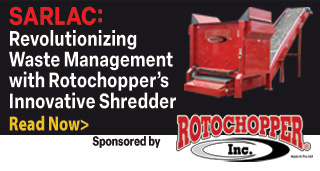A History of Garbage Regulation and the Refuse Truck
If you were like any normal kid, you grew up idolizing certain characters. Comic book superheroes included Superman, Spiderman, Batman, and many more. Their powers include the ability to fly, shoot webs, and operate the most sophisticated technologies. However, the basis for superheroes’ public adoration were anything but sophisticated. In fact, it was quite simple – superheroes help people. Though garbage men don’t often receive this type of devout fandom, perhaps they should. After all, they’ve been fighting to keep up our quality of living and maintain our cities for decades.
A Definition of Waste
Waste is defined by Merriam-Webster as damaged, defective, or superfluous material produced by a manufacturing process. Though environmentally-friendly habits have gained popularity in recent years, waste management workers still have quite a job to do. As long as there are people to throw things away, garbage men are almost solely responsible for picking up after us. Consumerism in America is only gaining momentum. Movies paint a grim picture of humanity’s future, where our planet is so overtaken by our own waste that we have to pile into a space ship and relocate. Luckily, thanks to our waste management workers, this is not likely to ever happen in real life.
A History of Garbage Regulation
We’ve been long annoyed by garbage. The concept of waste disposal goes back to a time before historians can accurately calculate. One of the earliest recorded landfills was created by Knossos, in Crete. He saw that the landscape needed a little cleaning up, so he dug large holes and stored the waste underground. In 500 B.C., a law was developed in Athens, Greece requiring that all waste be dumped at least one mile from the city. Though it would be over 2,000 years until the first refuse truck was invented, this was the first step.
The Refuse Truck
Believe it or not, garbage men once used horse-drawn carriages to haul waste. As you can imagine, this posed many problems from smell to spill. As soon as “the horseless carriage” became available to the masses in the early 1900’s, you can bet garbage men were thankful. Covered bodies were developed to lock in the smelly waste and minimize spilling during transportation. It was very common to dispose of trash in the most convenient place. This meant dumping in the ocean and rivers until the Supreme Court banned this practice in 1934. Burning waste was also prohibited, which spawned the formation of the National Association of Waste Disposal Contractors in the 1960’s.
1920’s – Rear Loader Truck
When you think of a garbage truck in today’s society, that concept began almost 100 years ago. These developments revolutionized the way we deal with trash. The rear loader truck was the first of its kind – offering maximum efficiency by lifting the trash can from the back to the top of the truck.
1940’s – Garwood Load Packer
This truck was the first to utilize hydraulic technology in waste disposal. It was the world’s first peek at the idea of compacting, as this truck demonstrated an unprecedented capability to decrease the volume of the garbage. This technological breakthrough is still the standard for refuse trucks today.
1950’s – Side Loader Truck
Many residential fleets adopted the side loader model because it offered the hydraulic-powered metal panel that compresses the material to the back of the bin. You’ll find this design is still used by many fleets today.
1970’s – “Godzilla” and the Pack Master
Waste Haulers were dying to get their hands on the Maxon Barell Snatcher, nicknamed “Godzilla.” Its huge size was unprecedented. It also demonstrated an incredible lifting power – picking up containers with hundreds of gallons of waste in them. However, the truck also had its disadvantages. Residential and commercial waste haulers complained that its size was too unpractical.
The Pack Master took hydraulics to the next level. A photograph of this truck crushing a Volkswagen was widely circulated in newspapers. It opened the door to new possibilities in waste compaction. This would solve the problem of many waste managers up until this point in history, taking care of furniture and large appliances that other trucks couldn’t handle.
1990’s – The Refuse Truck ‘Hey Day’
By this time, waste management was a top priority for many governments of the world. We were looking for any way to more efficiently get rid of garbage. In 1991, the future of landfill operations was saved with the EPA’s decision to set standards for groundwater protection, monitoring, and closure care. Breakthroughs in hydraulics and worker safety would continue throughout this era, and the government would take note. The refuse trucks developed during the 90’s would prove to pack 2 to 3 times as much material as the first models. The most popular model today is the front loader, grasping the container and dumping it over and behind the driver’s head. Its speed has earned it popularity in residential and commercial areas.
The Future of the Garbage Truck
We can only guess what technologies will be implemented in the refuse trucks of the future. The industry today offers all kinds of trucks including hook lift trucks and grapple trucks. Hook lifts feature a de-mountable design. Grapple trucks offer prospective buyers 6 different variations, maximizing efficiency and convenience. These models exceed the expectations of just a few decades ago. Who knew 100 years ago that waste haulers would be able to collect and dispose of waste without even exiting the cab of the truck? As the environment becomes a growing concern, experts are developing even more creative ways of disposing of waste. However, the garbage man’s job remains essentially the same as it was thousands of years ago – keeping our streets and homes clear of waste so that our cities and towns can continue to function and improve. You don’t have to be an environmentally-savvy hydraulic expert to help your local garbage man out. Next time you see him picking up your trash, simply salute him for his heroic efforts. Maybe even teach your children to admire him as much as Superman or Spiderman, and the waste management journey will continue.







